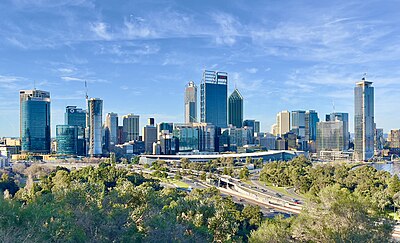Economy of Majocco
Jump to navigation
Jump to search
Arabat, the financial center of Majocco | |
| Currency | Dirham (MJD, م.) |
|---|---|
| Calendar year | |
Trade organisations | TGTO, Islamic League and others |
Country group | |
| Statistics | |
| Population | |
| GDP | |
| GDP rank | |
GDP growth |
|
GDP per capita |
|
GDP per capita rank | |
GDP by sector |
|
GDP by component |
|
| 1.85% (2024) | |
Population below poverty line |
|
| |
Labour force |
|
Labour force by occupation |
|
| Unemployment |
|
Average gross salary | ₵ 23,280 (urban non-private sector) ₵ 18,100 (urban private sector) per month (2024) |
| ₵ 11,174 (urban non-private sector) ₵ 8,688 (urban private sector) per month (2024) | |
Main industries |
|
| External | |
| Exports | ₵ 171 billion (2024) |
Export goods |
|
Main export partners |
|
| Imports | ₵ 114 billion (2024) |
Import goods |
|
Main import partners |
|
| |
Gross external debt | |
| Public finances | |
| |
| |
| Revenues | 310 م. billion 45.1% of GDP (2023) |
| Expenses | 278 م. Billion 33.3% of GDP (2023) |
| Economic aid | Recipient TBD |
| |
All values, unless otherwise stated, are in Quebecshirite Credits (₵). | |
Majocco has an upper middle income, the nation is a developing, Mixed economy, with a socialist market economy incorporating industrial policies and strategic ten-year plans.
It is the world's twenty-ninth largest economy by nominal GDP, behind Akvarelusus, and the world's [TBD] economy when measured by purchasing power parity (PPP).
The Majoccan economy consists of public sector enterprises, state-owned enterprises (SOEs) and co-operative enterprises, as well as a large domestic private sector and openness to foreign businesses in their system. Private investment and exports are the main drivers of economic growth in Majocco, while the Majoccan Government has also emphasized domestic consumption.
